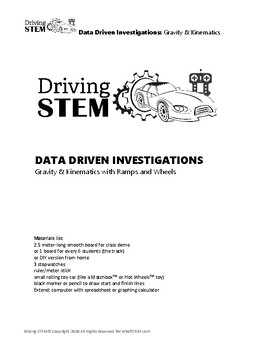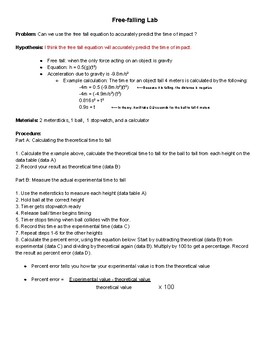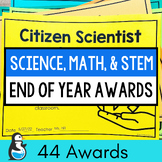6 results
Physical science Common Core 8.EE.A.2 resources

On Track with Math! Ratios and Proportions
Map your actual daily schedule for one day. Start with waking up in the morning, then work your way through the day in 20-minute segments. How do you “spend” your time? ESSENTIAL QUESTIONWhat is the golden ratio and how is it useful?What role do ratios and proportions play in your daily life?SUGGESTED MATERIALShandoutart suppliesruleroptional: calculator and compass

Gravity and Kenematics (Ramps Investigations)- Driving STEM
PurposeTo help students utilize scientific methodology to calculate acceleration due to gravity. To illustrate the connection between technology and research.ESSENTIAL QUESTIONWhat is acceleration due to gravity? What is the relationship between the speed of falling objects and the height from which they fall?Professor Pi’s Math Note3-4-5 Triangles (Pythagorean Theorem)SUGGESTED MATERIALS2.5 meter-long smooth board for class demoor 1 board for every 6 students (the track)or DIY version from home
Subjects:
Grades:
6th - 10th
Types:
NGSS:
HS-ETS1-3
, MS-PS2-4
, MS-PS2-2
, HS-PS2-1
, HS-PS2-4
...

Collision Lab: Introduction to Momentum
**Updated to match updates in Phet simulation**Students ...Explore non-sticky collisionsInvestigate the Law of Conservation of MomentumDerive the equation for momentum Solve collision problemsNGSS Addressed: MS-PS2-1. Apply Newton’s Third Law to design a solution to a problem involving the motion of two colliding objects.*Cause and Effect Cause and effect relationships may be used to predict phenomena in natural or designed systems. (MS-PS2-3),(MS-PS2- 5) Systems and System Models Models can be
Subjects:
Grades:
7th - 9th

On Track with Math! Ratios and Sponsorships
Map your actual daily schedule for one day. Start with waking up in the morning, then work your way through the day in 20-minute segments. How do you “spend” your time? ESSENTIAL QUESTIONWhat makes a race car go besides fuel?What role do ratios and proportions play in your daily life?SUGGESTED MATERIALSHandoutPencil and Paperoptional: calculator and compass

Measure It! Accuracy, Precision, and the Pythagorean Theorem
SIMPLE MACHINESHow accurate are the measurements? How precise?ESSENTIAL QUESTIONWhy do we use measurements?Professor Pi’s Math Note3-4-5 Triangles (Pythagorean Theorem)SUGGESTED MATERIALSUse a flexible tape measure or string stretched along a meter stick to measure a selection of round objects.

Free Fall Lab
In this lab, students first use the free fall equation to calculate the theoretical time for a ball to fall from four different heights. Second, they do an experiment and record the actual time to fall. Third, they calculate the percent error between the two times. It is designed as an introduction to the free fall equation and provides a common experience for the teacher to expand upon. It also serves as a method for calculating percent error.Materials needed: 2 metersticks1 ball1 stopwatch (or
Subjects:
Grades:
7th - 12th
Types:
Showing 1-6 of 6 results





